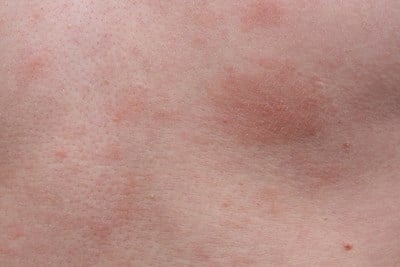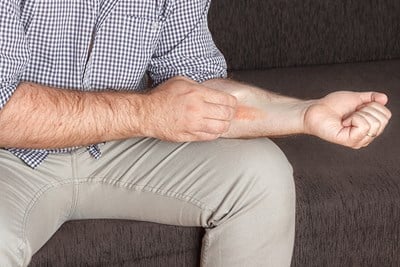Hand dermatitis is also called hand eczema, but it’s proper name is dyshidrosis. While it generally appears on the back of the hands, the soles of the feet may be affected too. The cause of dyshidrosis is unknown, but an allergy/immune system response is suspected, particularly as it tends to appear during seasons with high sinus allergy issues. Stress, atopic dermatitis, sensitive skin, and contact with certain metals (particularly cobalt and nickel) increase the chances of developing dyshidrosis.
Symptoms include a series of bumps that develop on the palms and along the sides of the fingers (and, again, sometimes the soles of the feet). Smaller bumps may blend to become larger blisters, and the skin is often very itchy or sore. After about three weeks, they generally come off, leaving the skin cracked, red, and tender. This cycle can continue chronically.
Treatment for hand dermatitis usually starts with corticosteroid steroid cream, although long term use is not recommended. Light therapy may be used concurrently when other methods don’t work. Excessive itching can open the skin to bacterial infections, requiring antibiotics. Medication that suppresses the immune system may be beneficial for patients who wish to avoid steroids. Botulinum toxin injections may be used for extreme cases. Cool compresses and over the counter antihistamines like Benadryl are good home measures; witch hazel (an astringent) soaks can reduce the time it takes for dyshidrosis to heal.
Have more questions? See more answers from Alot.


